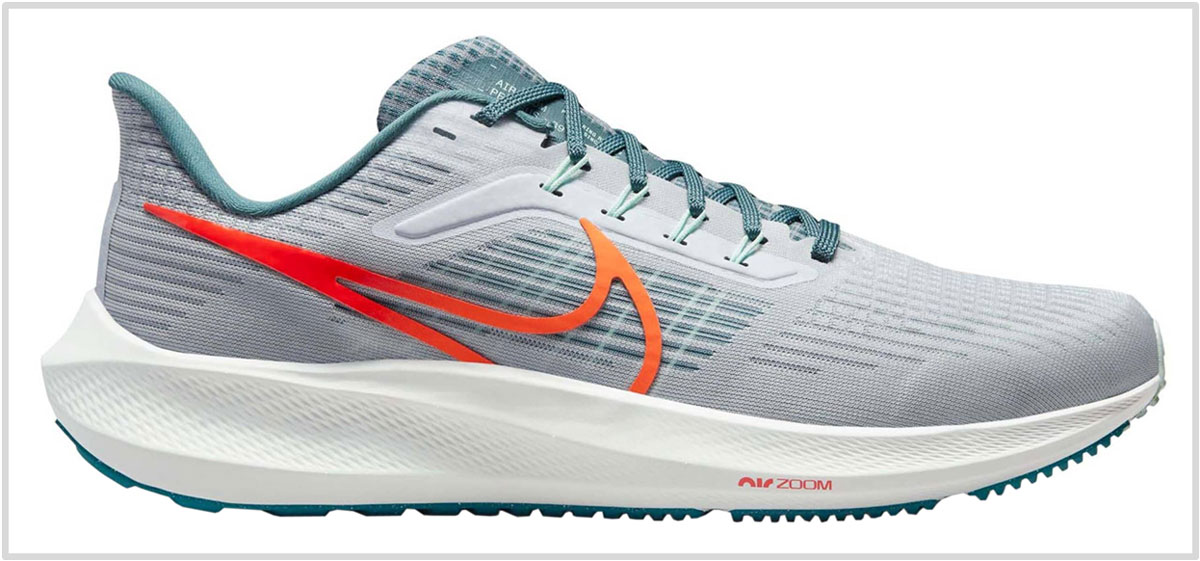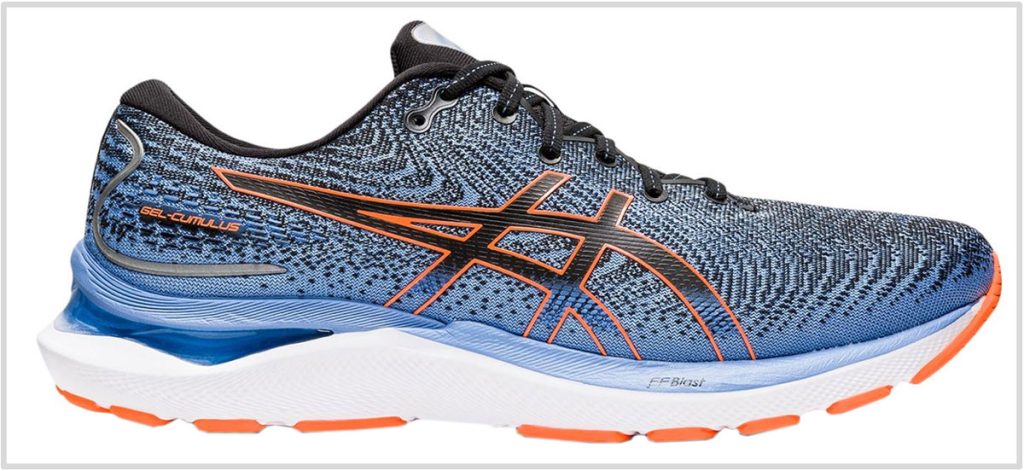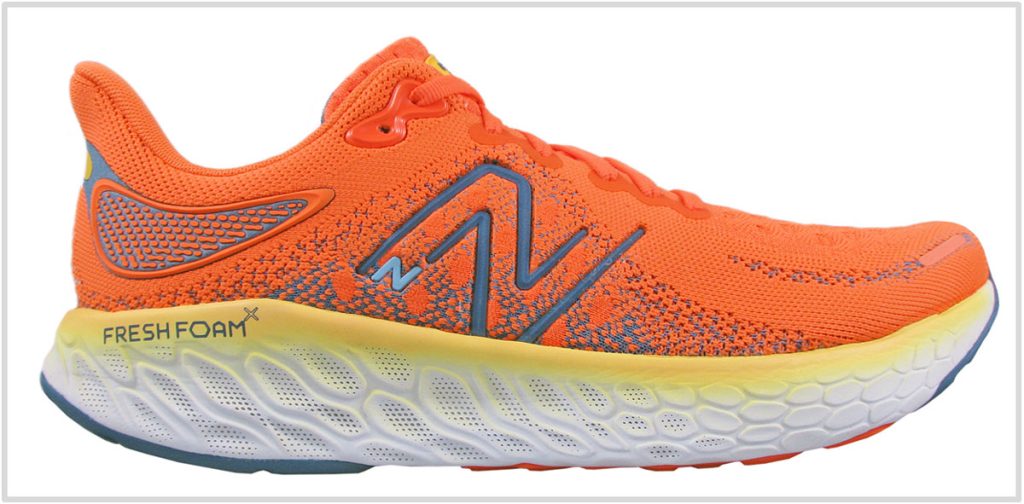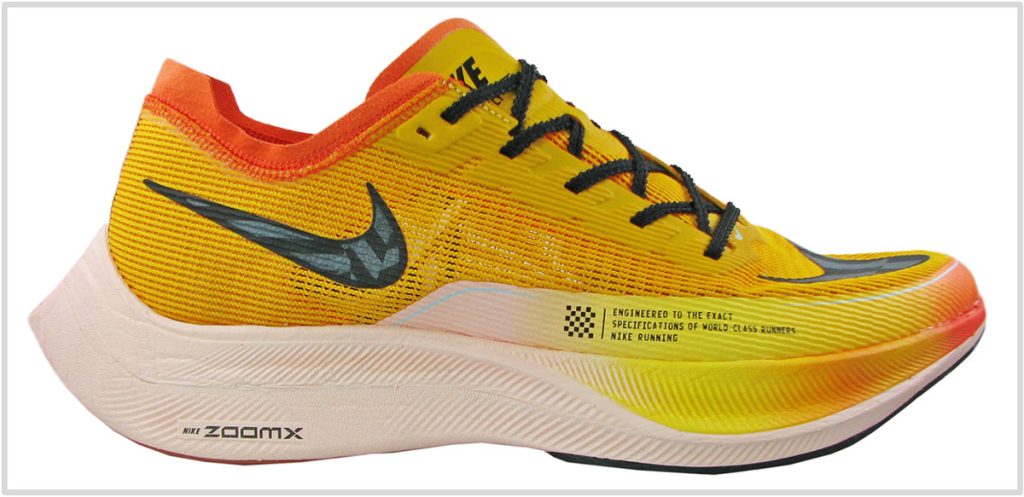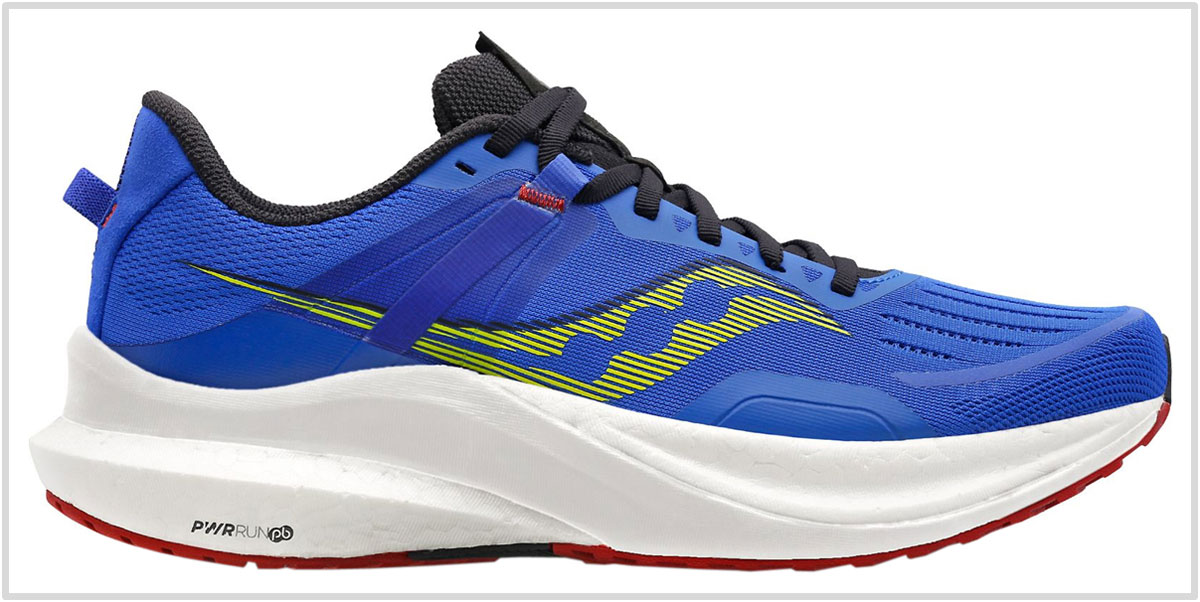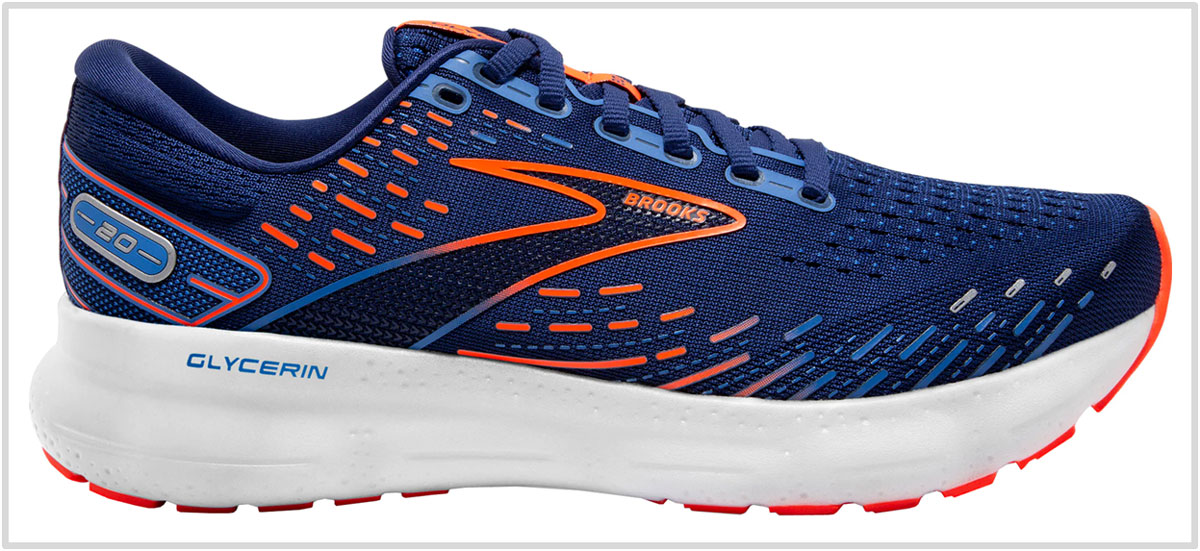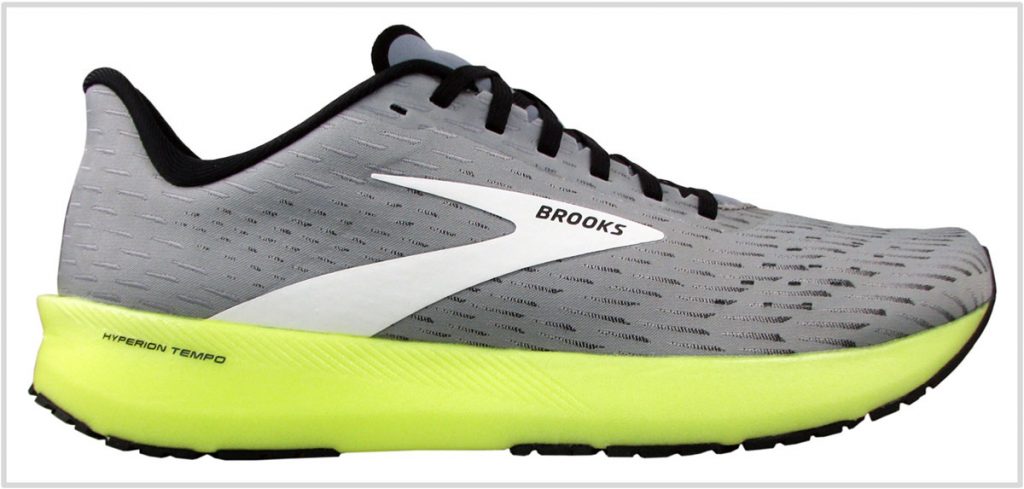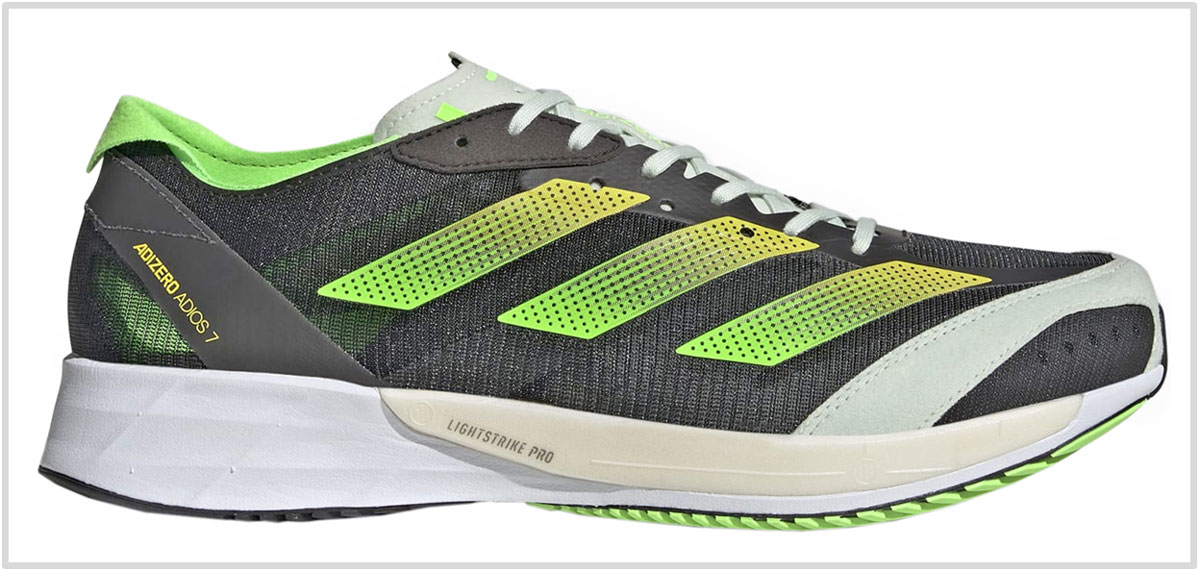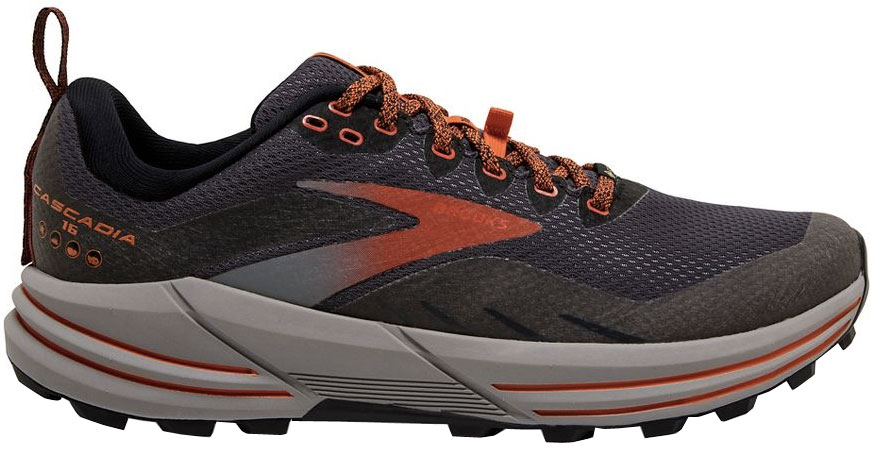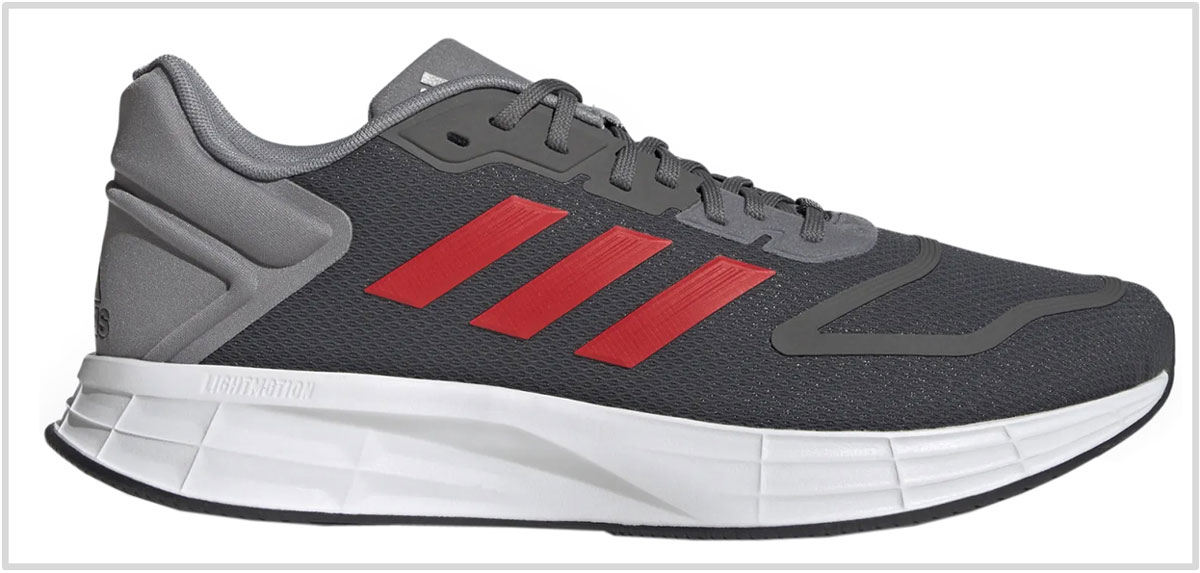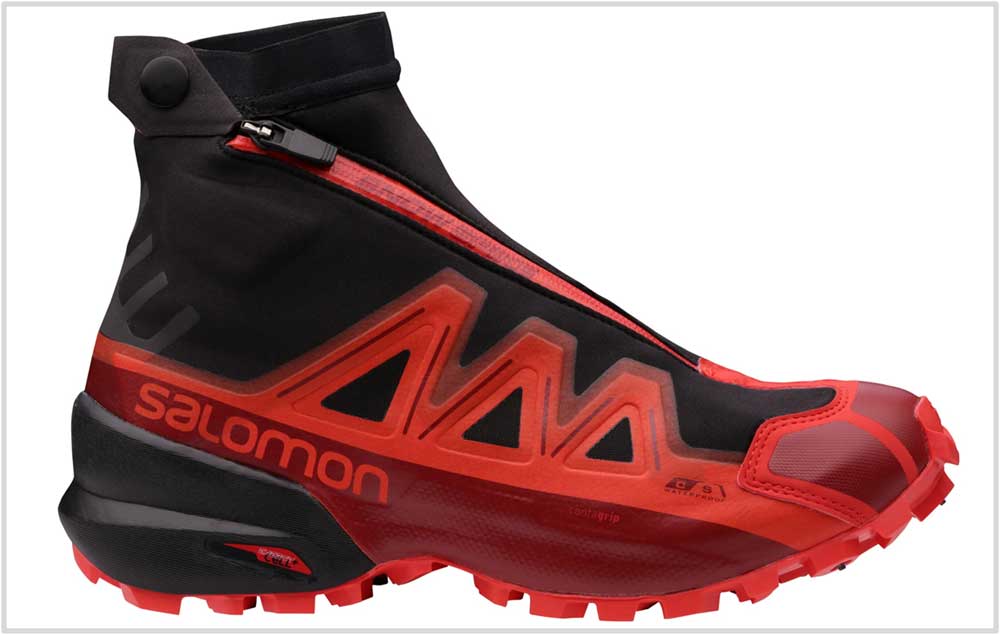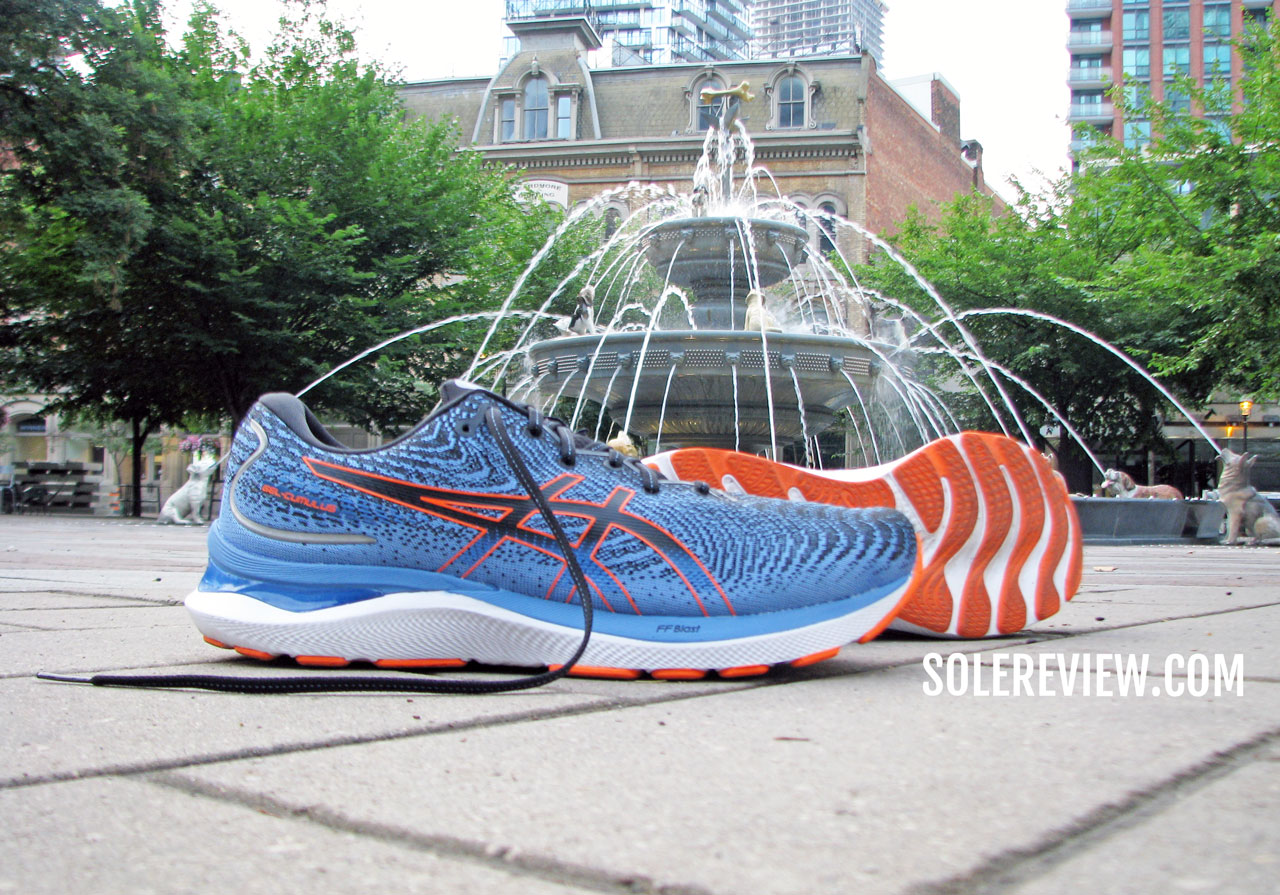
This article was updated on 11th August, 2022 with current models. The preface has been completely re-written to reflect current trends and new ranking methodology.
In this product guide:
- 1. Factors to consider
- 2. Best for daily runs: Nike Pegasus 39
- 3. Best for beginners: Asics Cumulus 24
- 4. Best for a soft ride: New Balance 1080 V12
- 5. Best for marathons: Nike Vaporfly Next% V2
- 6. Best for medial support: Saucony Tempus
- 7. Best for heavy runners: Brooks Glycerin 20
- 8. Best for tempo runs: Brooks Hyperion Tempo
- 9. Best for short races: adidas adios 7
- 10. Best for trail runs: Brooks Cascadia 16
- 11. Best under $100: adidas Duramo 10
- 12. Best for ice and snow: Salomon Snowspike CSWP
This time, instead of cluttering the list with multiple options for the same use case, there’s only a single ‘top pick’ for each category. We know – that’s a hard choice to make, but isn’t that the whole point of a curated selection?
So here we are, once again. It’s time to reflect on the year that’s almost gone by and pick the best running shoes that money can buy.
The last few years have been exciting times for running shoes. It’s as if all the brands snapped out of their inertia to introduce a slew of innovative models.
Be it new-age midsole materials (adidas Lightstrike, Nike ZoomX, Saucony Pwrrub PB) or a different design approach to stability running shoes (Saucony Tempus), there’s plenty of newness everywhere.
On the other hand, the ever-churning marketplace makes shoe shopping a confusing experience. This product guide intends to simplify the process.
We’ll update this guide as we get miles on new shoes like the Saucony Endorphin Pro and Speed 3, and also when other models like the Brooks Ghost 15 hits the shelves. To see what’s in store for the rest of 2022 and beyond, our release calendar is a handy guide.
Being the ‘best’ running shoe shouldn’t be just about the hard product, but also consider other factors. For example:
1) Easy to find and buy: Not all shoe models and brands are readily available across all retail channels and territories, so this guide focuses on the popular models that are likely to be sold in most places.
2) Price-value ratio: Except for the Nike Vaporfly Next% and Salomon Snowspike CSWP, all the shoes have a US retail of $160 or lower. At this price range, one gets all the important bits required in a running shoe without compromising on performance.
3) Contemporary technologies: Several shoes on this guide feature the new cushioning tech, and in some cases, represent the highest tier of performance. Noteworthy examples are the Nike Vaporfly Next% 2 and Saucony Tempus – both use a PEBA foam midsole with other unique bits.
This list is in the order of popular categories, so we’ll begin with the best everyday trainer.
1) Best for daily runs: Nike Pegasus 39
With the Pegasus 39, Nike returns to what has worked in the past. The Pegasus 39 is similar to the Pegasus 34 – the last version with two Zoom Air bags. The new React midsole is also softer than the Pegasus 37 and Pegasus 38, so the 39 is a significant improvement in most areas. Our detailed review has all that you need to know about the 2022 Pegasus.
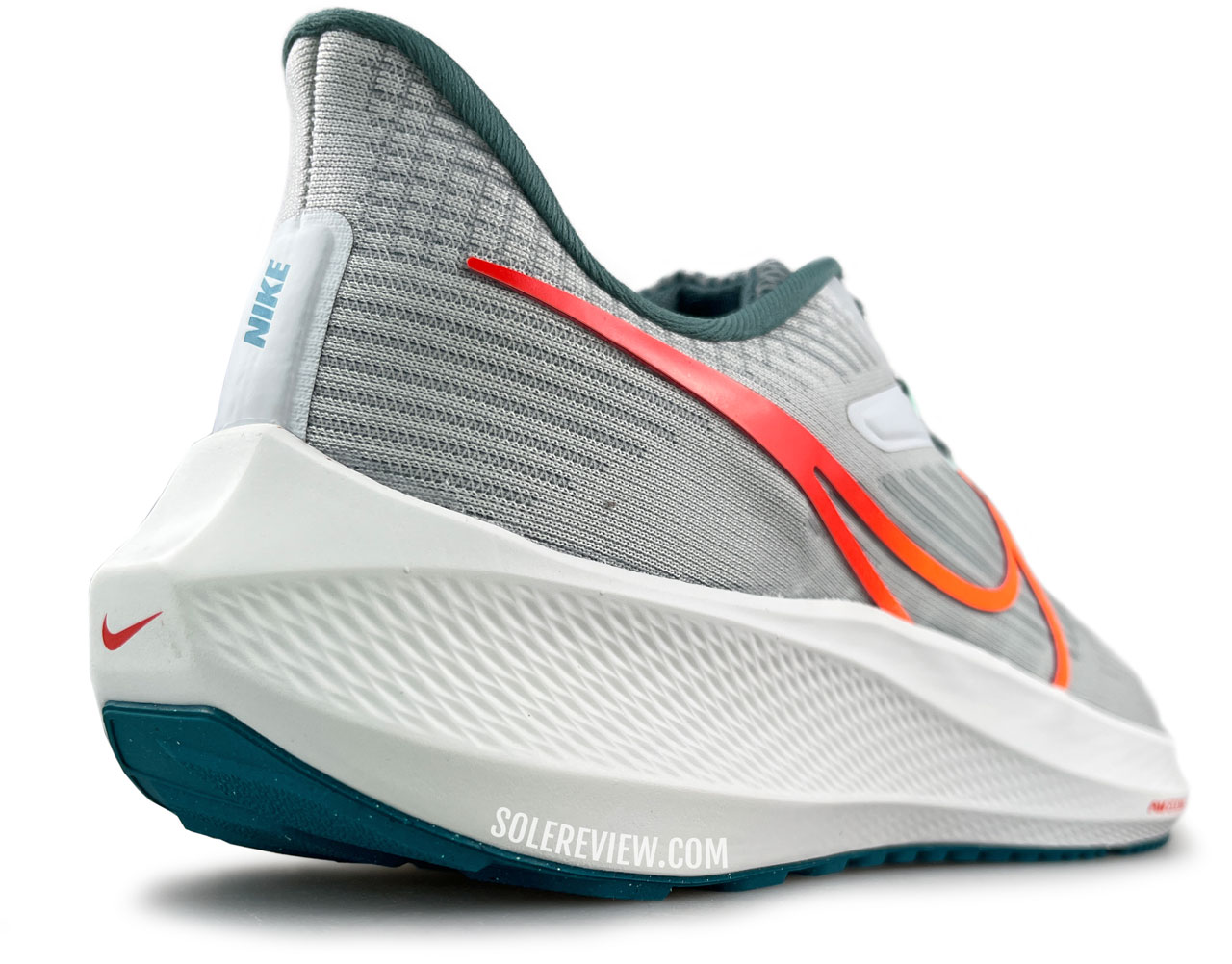
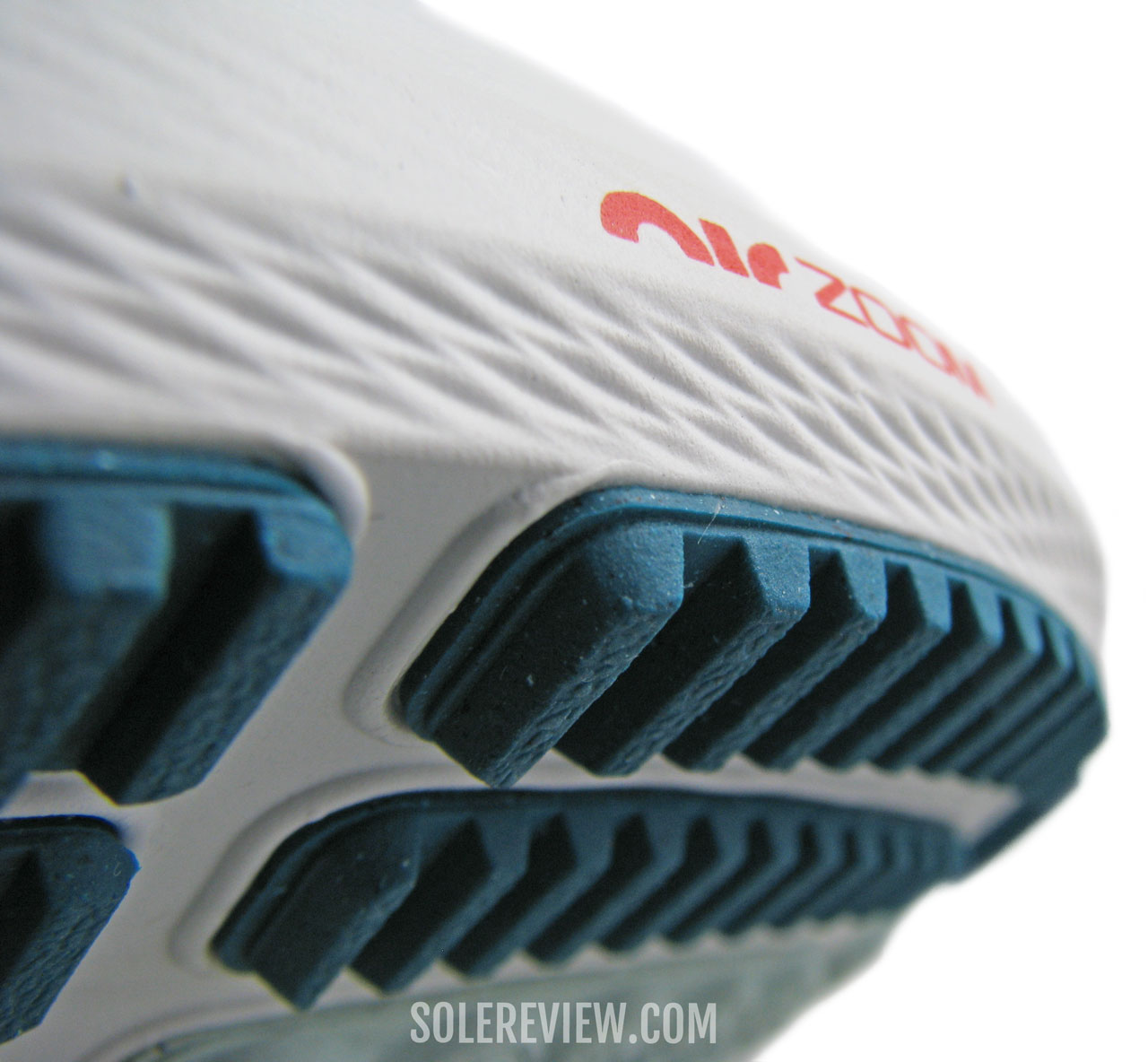
The tiny rubber lugs on the sides have a satisfying road bite.
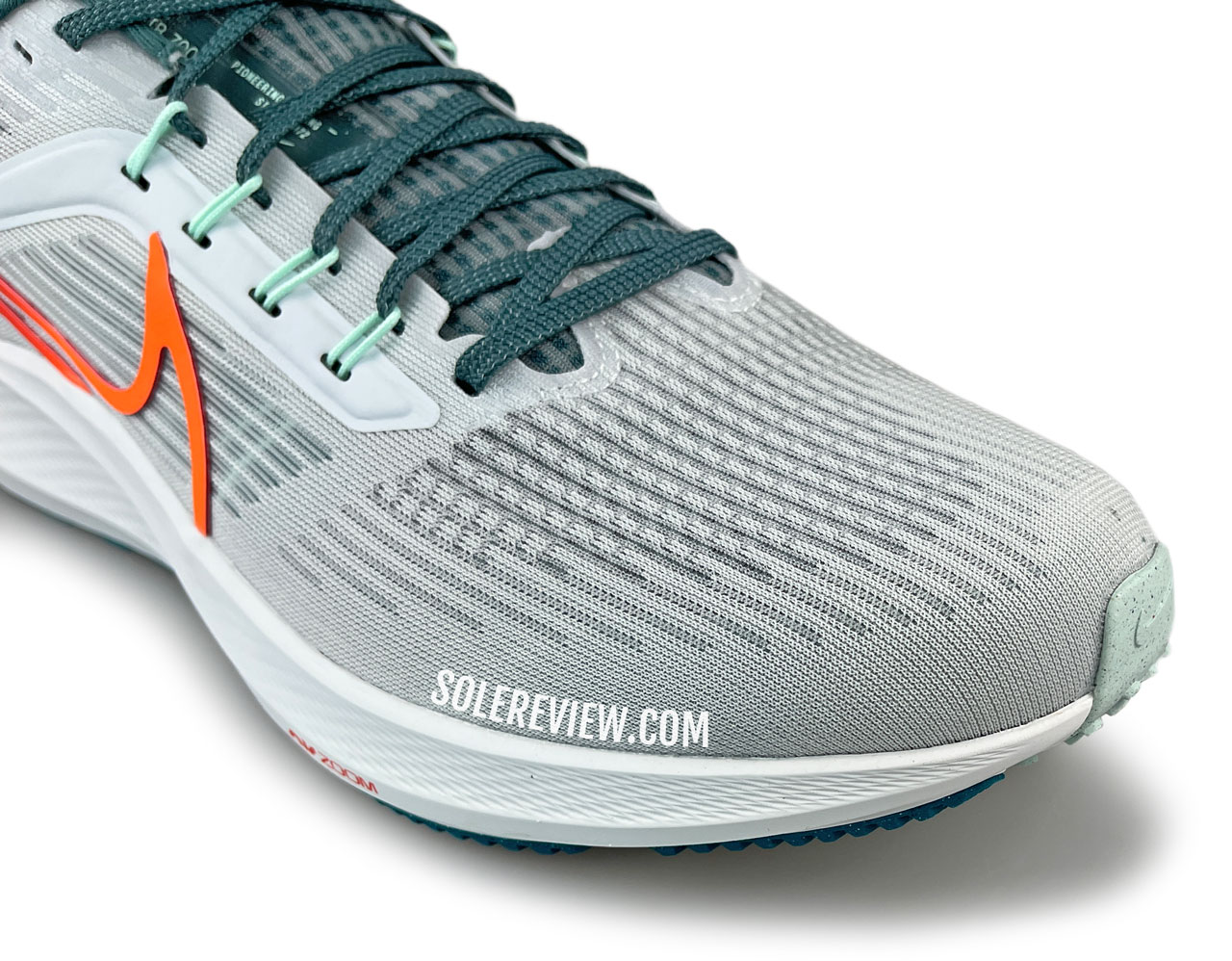
To be specific, the front and rear Zoom Air bags result in a balanced cushioning feel, and the softer foam core increases the ride comfort. The upper achieves an excellent balance between interior proportions and a secure fit.
A sleeved interior and lacing loops lock the foot down, but the fit never feels overly tight.
The outsole traction is best in class, and the just-right midsole softness makes the Pegasus extremely versatile. Use it for easy runs, tempo runs, or treadmill workouts – the Pegasus 39 never feels out of its element.
2) Best for beginners: Asics Cumulus 24
Though the Cumulus 24 lacks the snap of the Nike Pegasus 39, it’s an excellent shoe for new runners.
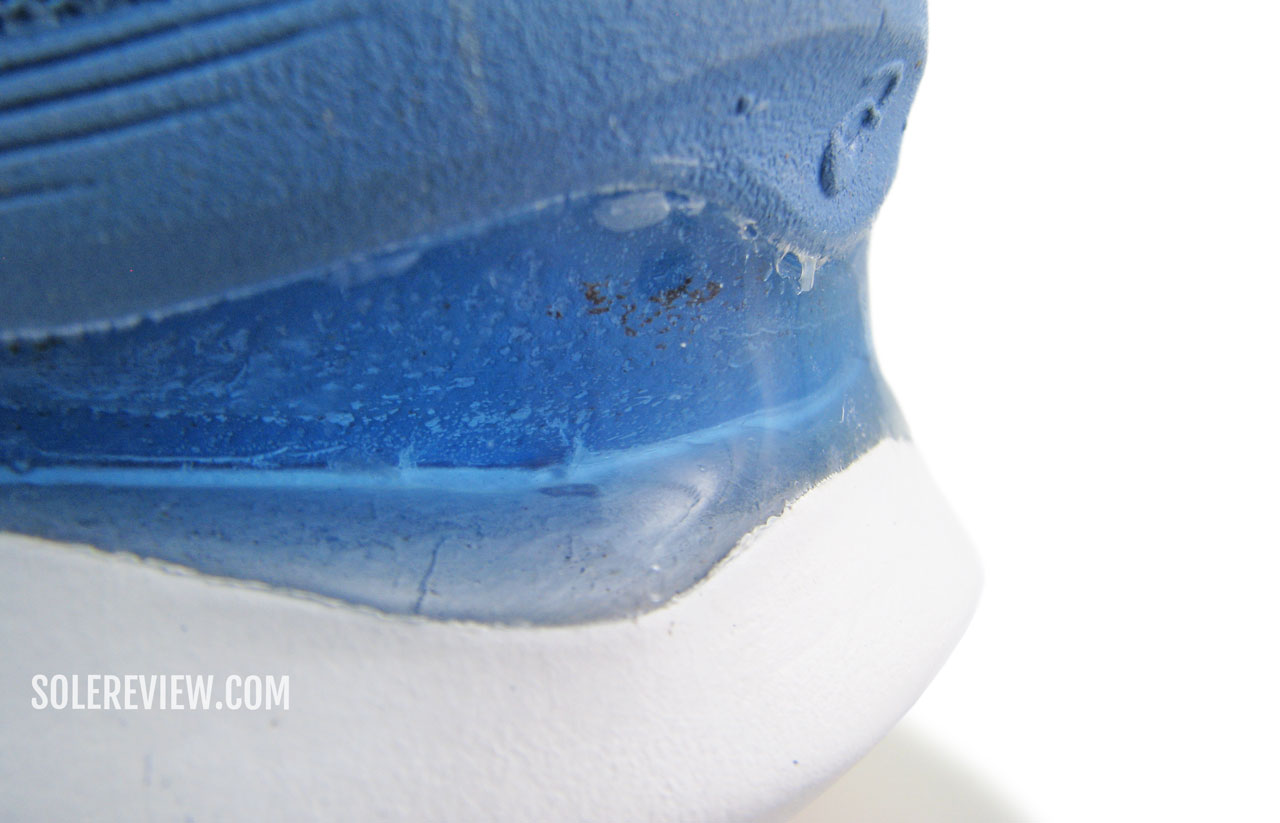
The pretty Asics Gel doesn’t have a significant effect on the cushioning, but rather acts as a stabilizing component.
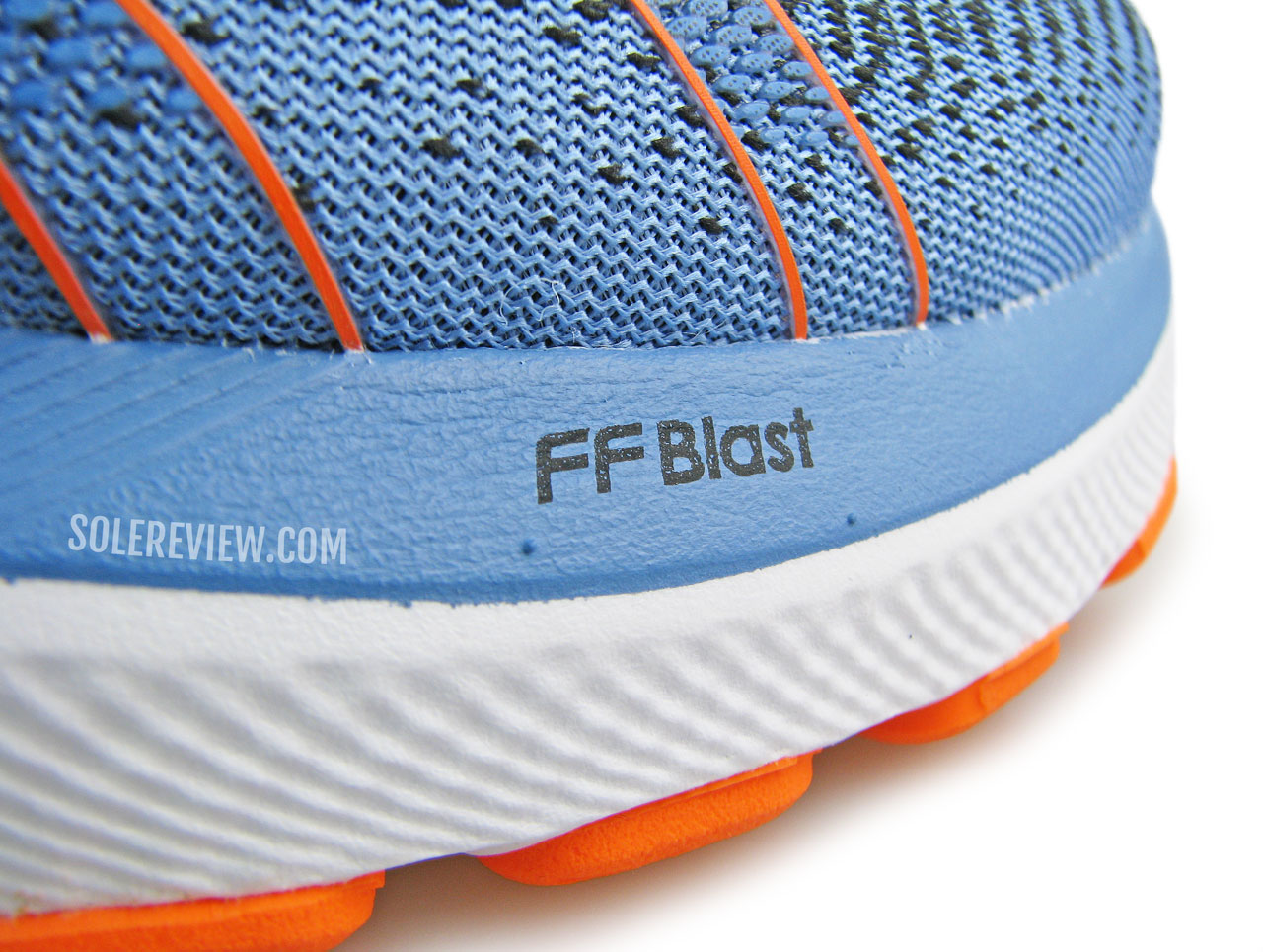
The Asics Cumulus 24 gets a Flytefoam Blast stack for improved responsiveness.
The soft Flytefoam midsole offers a lively ride that suits runners of all experience levels. Also, a smooth yet secure upper creates a comfortable fit experience.
This time, the Cumulus even has an upper sleeve for a better fit – a feature that was missing on the previous models.
The midsole is neither too soft nor firm, so the Cumulus 24 is a good fit for most occasions, be it everyday runs or high-mileage training. Our in-depth review explains what makes the Cumulus tick.
Also see: Saucony Ride 15, New Balance 880V12, Brooks Ghost 14.
3) Best for a soft ride: New Balance Fresh Foam X 1080 V12
While there are much softer shoes than the 1080 – like the New Balance Supercomp trainer or Hoka Bondi 8 for example – the New Balance 1080V12 does a better job of blending ride softness with use-case versatility.
The Fresh Foam X’s high-volume cushioning isn’t just about softness. The foam has a lively character that prevents it from becoming mushy, and the surprisingly inflexible forefoot makes the midsole behave like a rocker. Our in-depth review has everything that you need to know about the 1080V12.
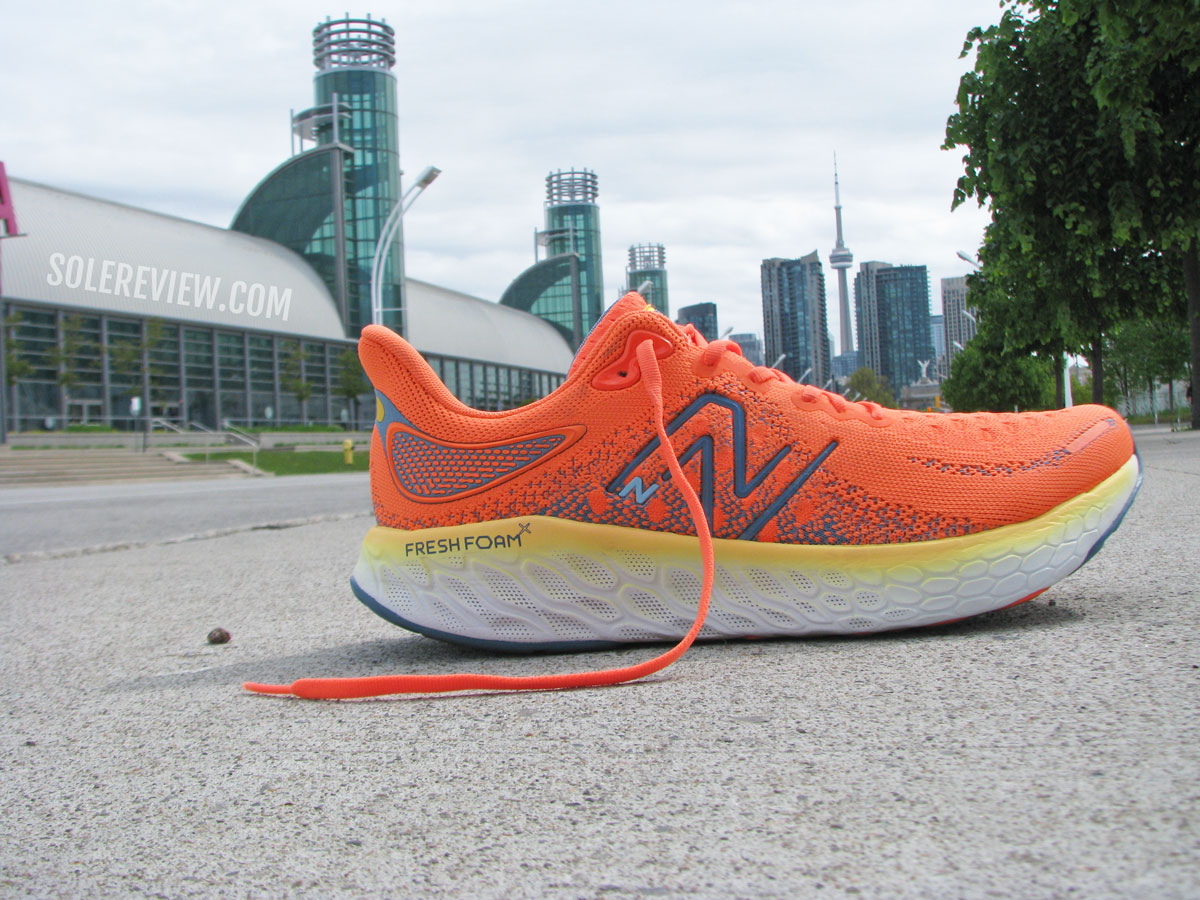
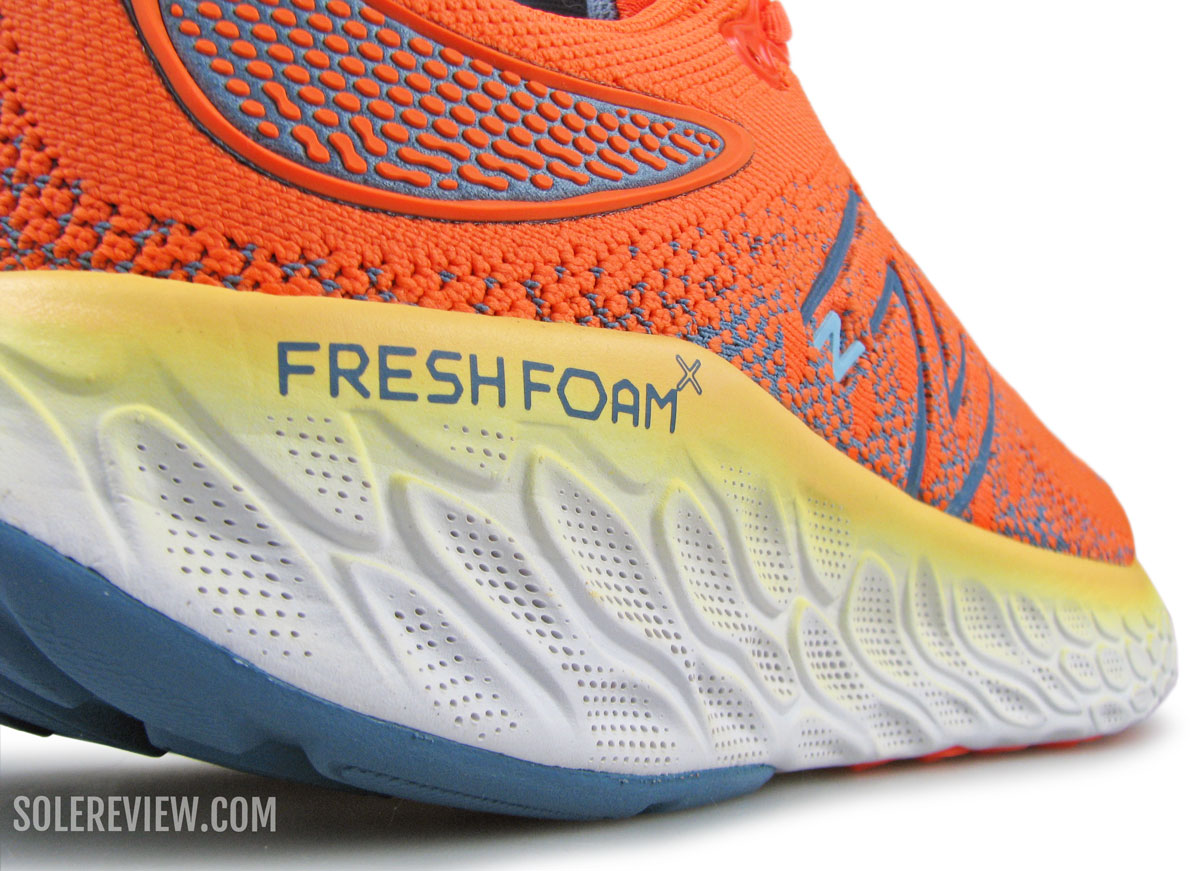
Simply put, that’s good news if you want your running shoe to work for a variety of runs. The deep cushioning makes long-distance runs less punishing on the feet, and the transition-friendly ride doesn’t slow you down.
The 1080 V11’s upper was excellent, and the V12 is more of the same. The exterior mesh is soft, smooth, and has an elastic forefoot for a secure yet accommodating fit.
Also see: Hoka Clifton 8, Asics Nimbus 24.
4) Best for marathons: Nike Vaporfly Next% V2
There’s nothing we can say about the Vaporfly Next% that hasn’t been said before, but for whatever it’s worth – here we go again.
If a traditional road racer with its punishingly flat midsole isn’t what you’re looking for, the Nike Vaporfly Next% V2 may just be the marathon racer you need.
The best of what Nike has to offer is crammed into the midsole, namely the full-length Carbon Fiber plate and the super-light ZoomX foam.
We’ve reviewed the Nike Vaporfly Next% 2 on this site, and here’s where you can read it.
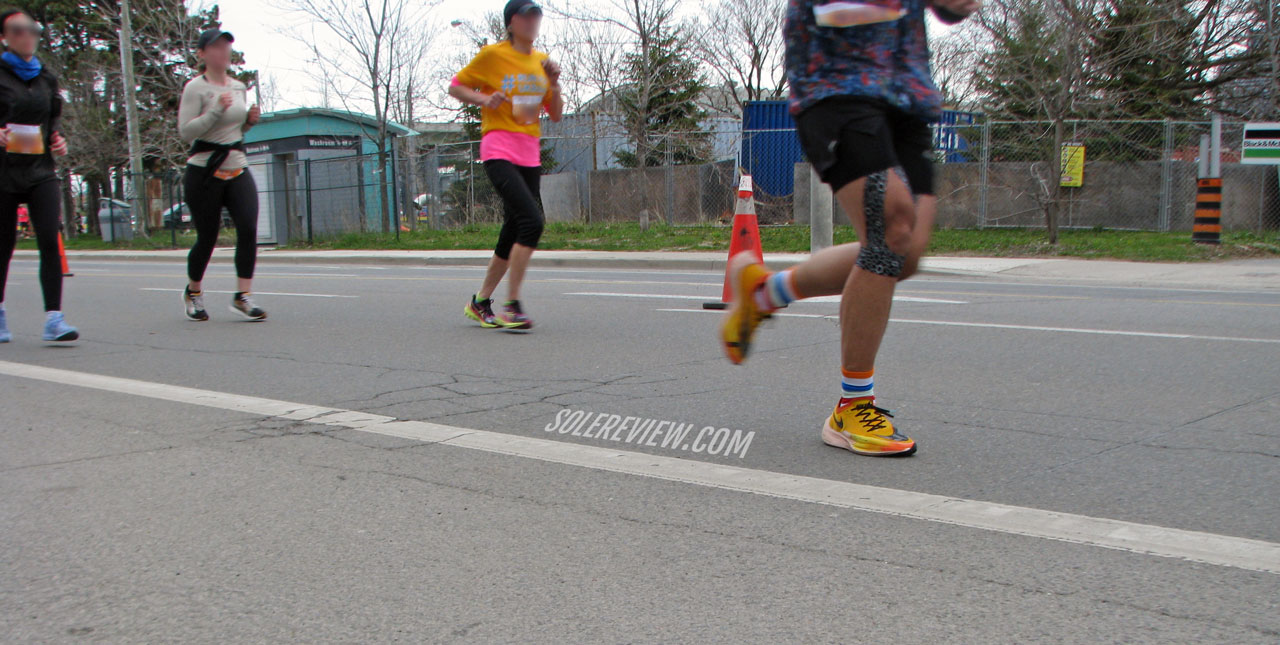
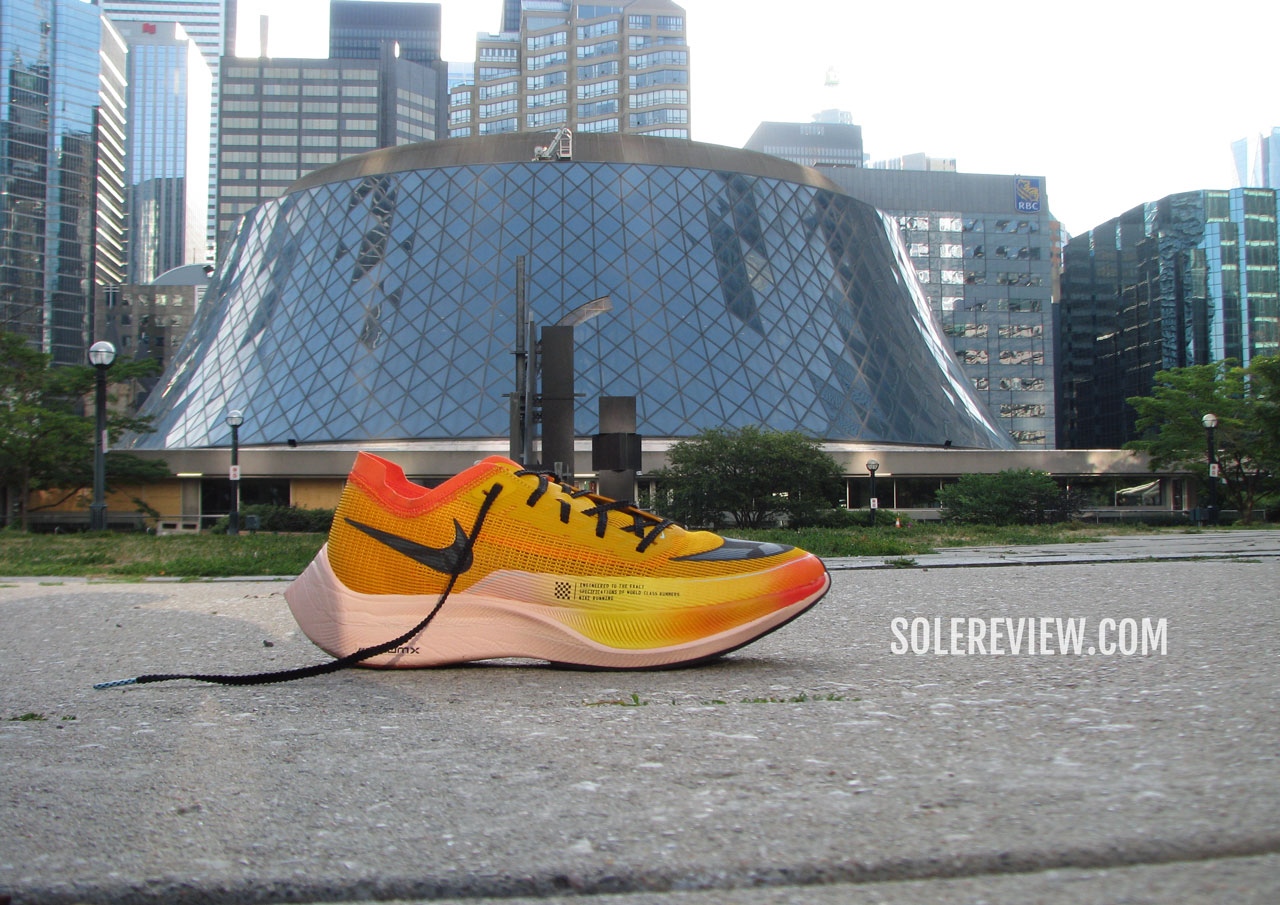
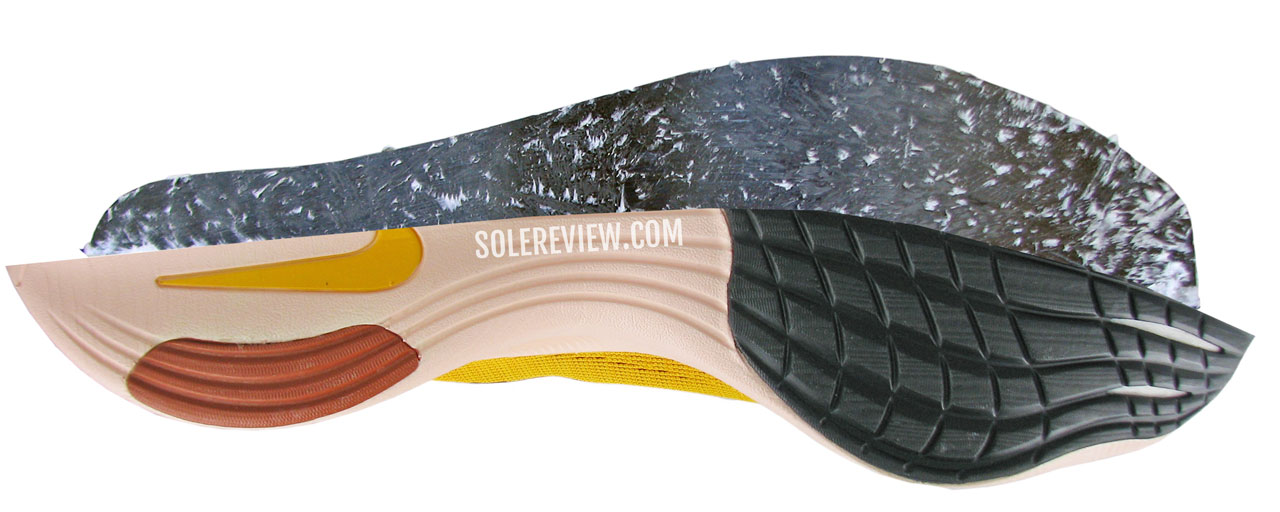
This simulated image gives us a pretty good idea of the Carbon plate’s position inside the midsole.
Both these technologies work together to deliver a superlative ride experience. The ZoomX foam produces a soft and responsive cushioning that reduces foot fatigue during high-mileage runs. At the same time, the Carbon fiber plate creates a springboard-like effect that propels the foot forward.
The barely-there upper has a snug fit and disappears over the foot. The open mesh also makes the Vaporfly extremely breathable.
5) Best for medial support: Saucony Tempus
As pointed out in our comprehensive review, the Saucony Tempus is a modern spin on what adidas accomplished with the Sequence Boost in 2014.
The Tempus combines a lightweight PEBA foam midsole (Pwrrun PB) with a firmer EVA frame to create a unique ride experience.
The EVA frame wraps the midsole for a supportive ride, whereas the softer and responsive foam core adds versatile comfort.
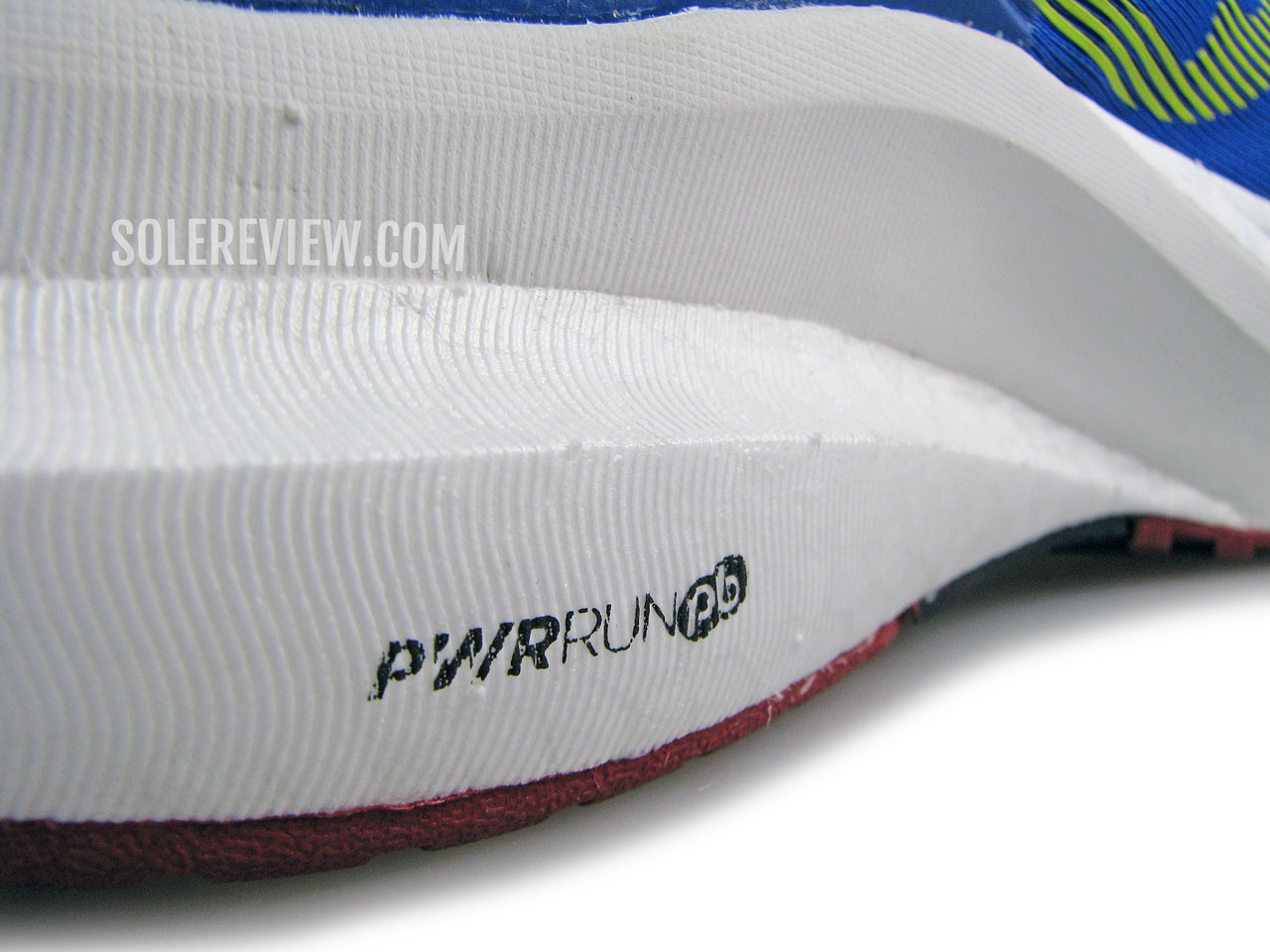
The Tempus combines an EVA frame with a softer Pwrrun PB core – the same material that’s used on the Endorphin Speed and Pro.
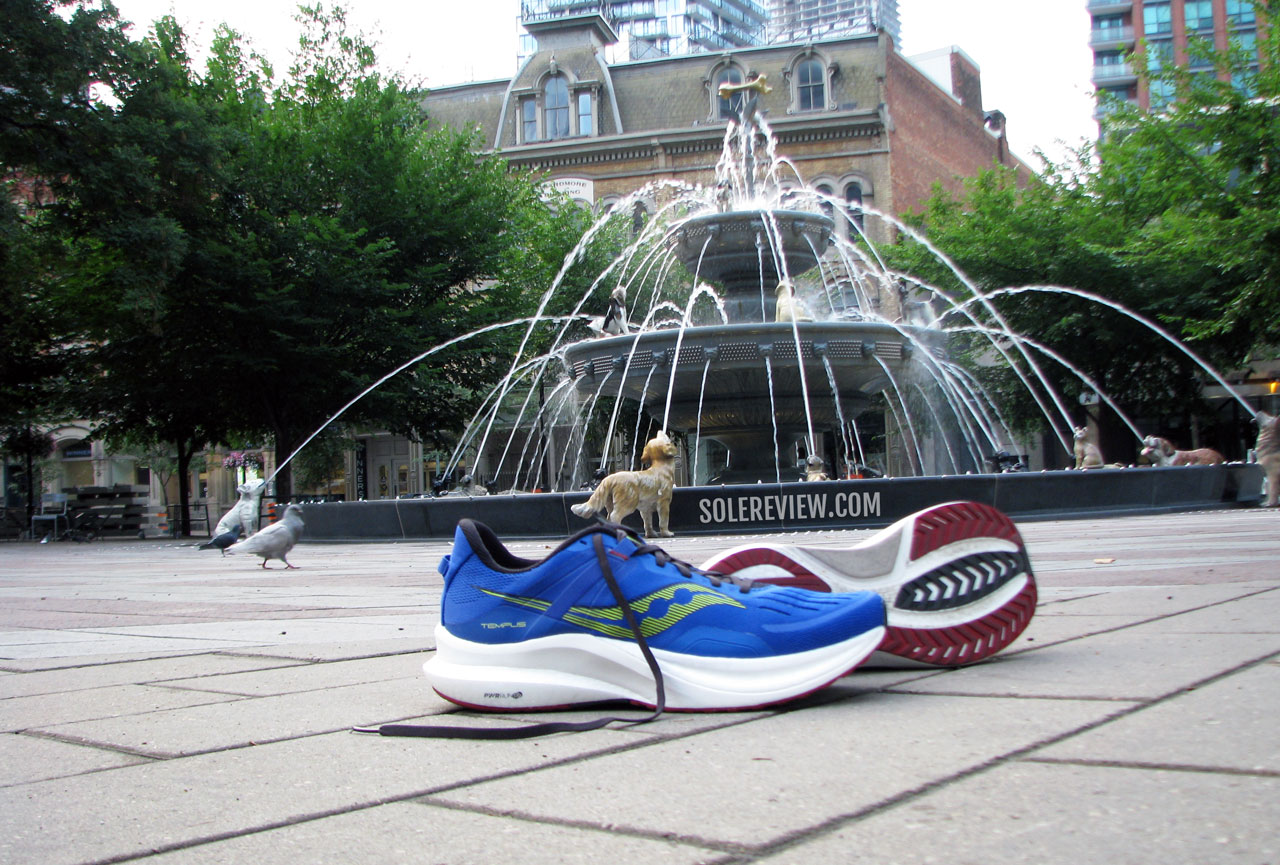
What we like about the Tempus is that it’s not an overly soft shoe, and the stability ‘wrap’ doesn’t create a bias like a traditional medial post.
Instead, the midsole is neutral in its cushioning delivery. The firm undertone also makes the Tempus better for slightly quicker runs of speeds up to 4:30 min/km (7:00 min/mile).
The lightweight upper has a soft interior environment with excellent ventilation.
6) Best for heavy runners: Brooks Glycerin 20
According to Brooks, the Glycerin 20 is a ‘supremely soft’ running shoe.
However, our review made it clear that Brooks’ marketing can be misleading at times. Because the new Glycerin is nowhere as ‘super soft’ as the brand claims it to be.
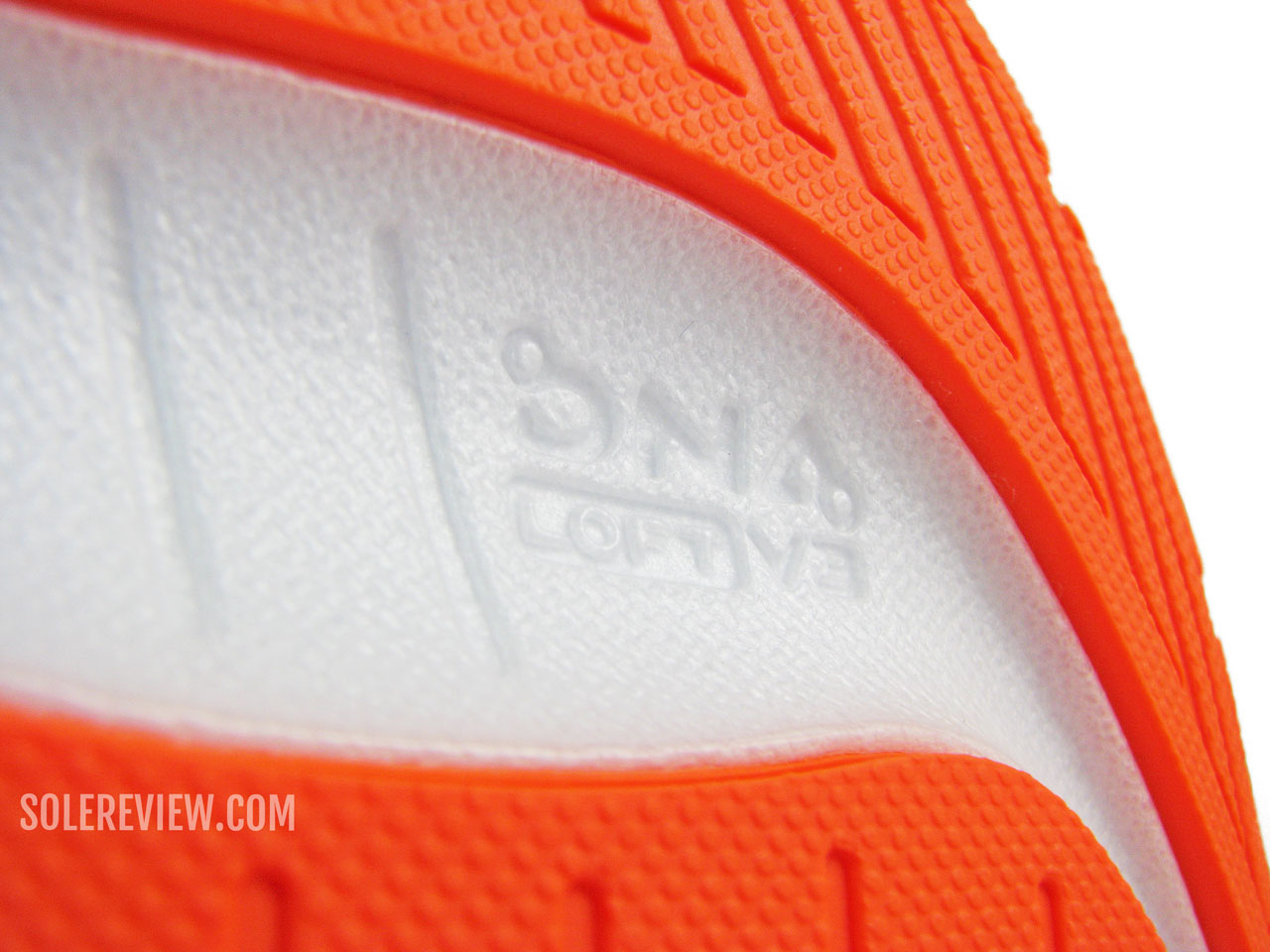
Though the DNA Loft V3 foam isn’t super soft, it offers supportive ride comfort.
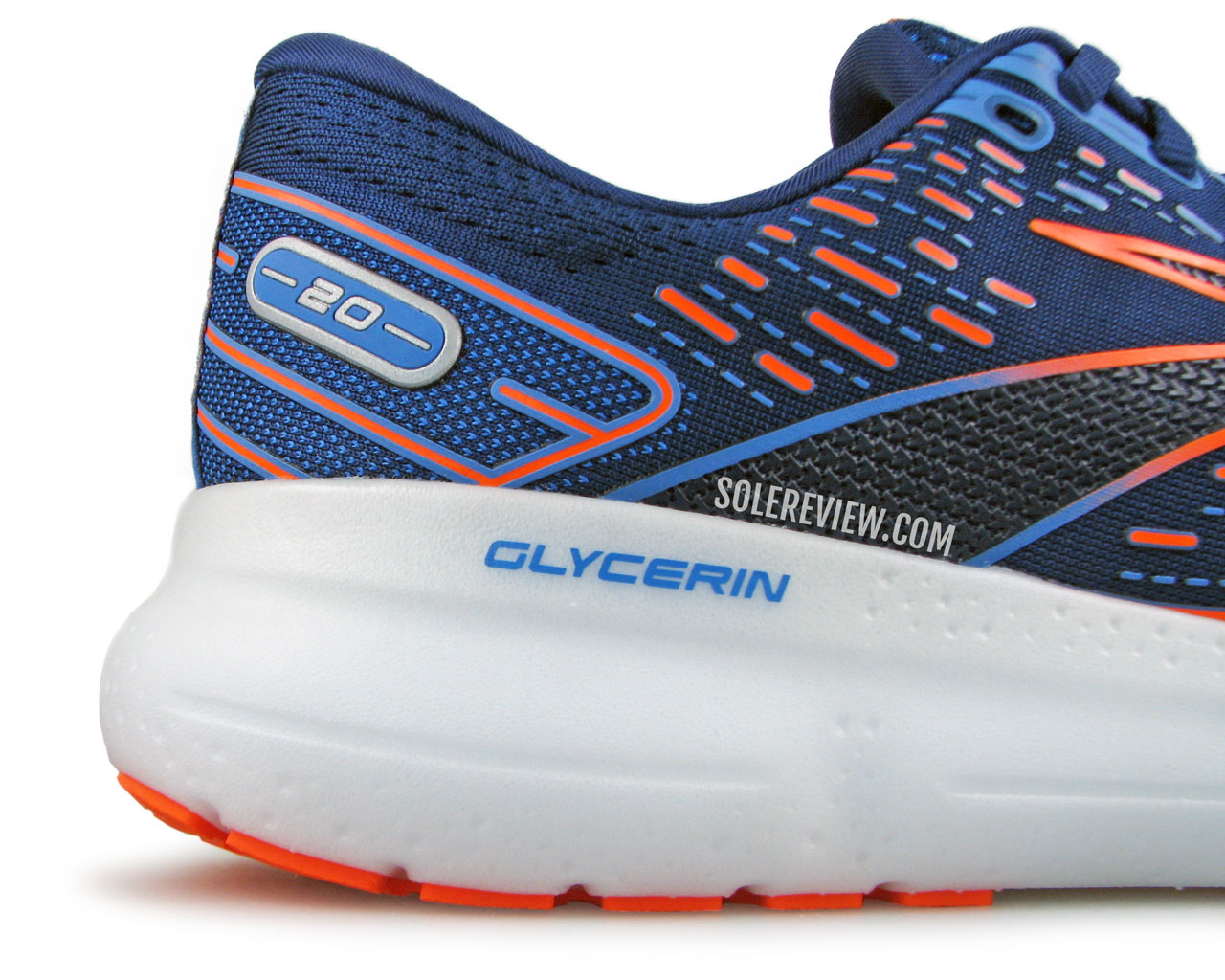
Though slightly heavy, the Brooks Glycerin 20 makes a strong case for itself as a long-distance cruiser.
To the Glycerin 20’s credit, the DNA Loft V3 midsole packs a generous amount of cushioning. However, most of this cushioning is a firm kind, and not as soft as the New Balance 1080 V12 or Fuelcell Supercomp trainer.
And guess what, that’s perfect for heavy runners. The wide base of the firm midsole produces a stable foundation for heavy runners, while the soft mesh exterior creates a secure and comfortable fit.
(Related read: The best running shoes for heavy runners)
7) Best for tempo runs: Brooks Hyperion Tempo
The Brooks Hyperion Tempo is severely under-rated. This lightweight trainer’s firmly cushioned ride is good for building up speed and long-distance runs.
The Nitrogen-infused DNA Flash midsole has a firm ride that excels at higher speeds – say, between 4:00 min/km (6:30 min/mile) to 4:30 min/km (7:00 min/mile). The superlative outsole traction also helps; read our full review to know what makes the H-Tempo a great running shoe.
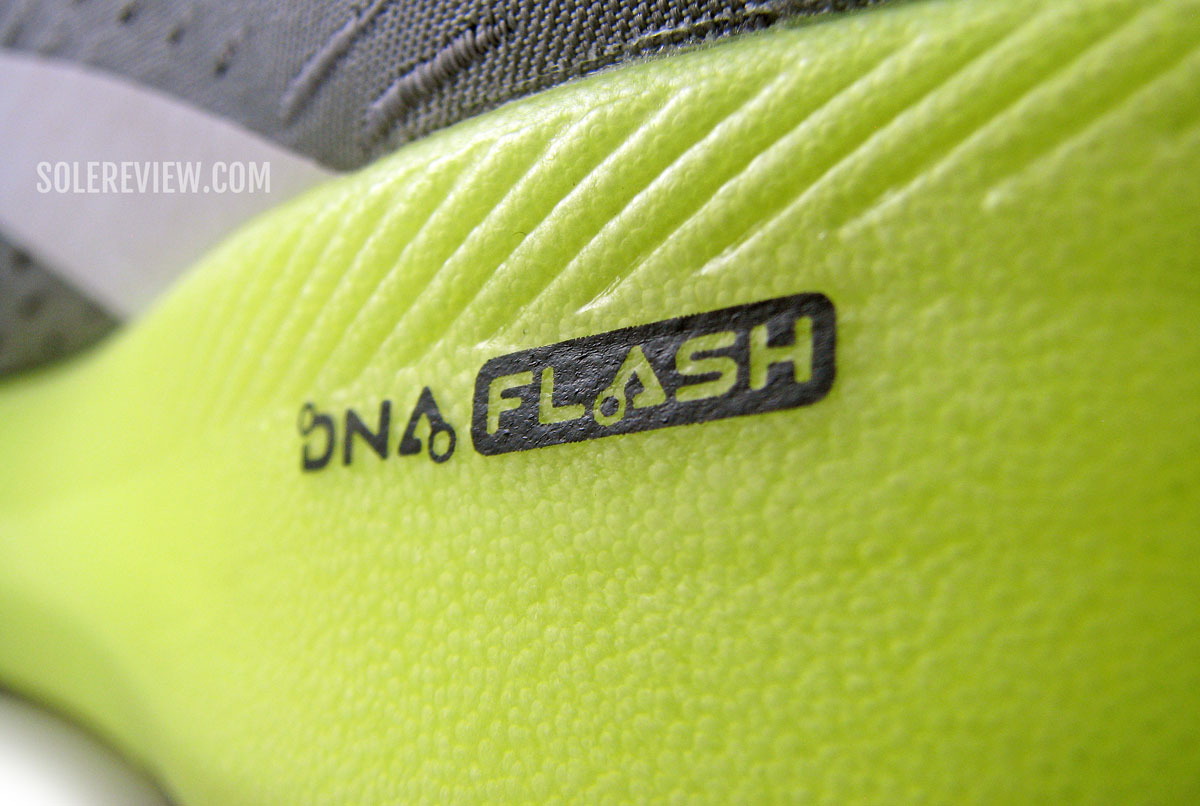
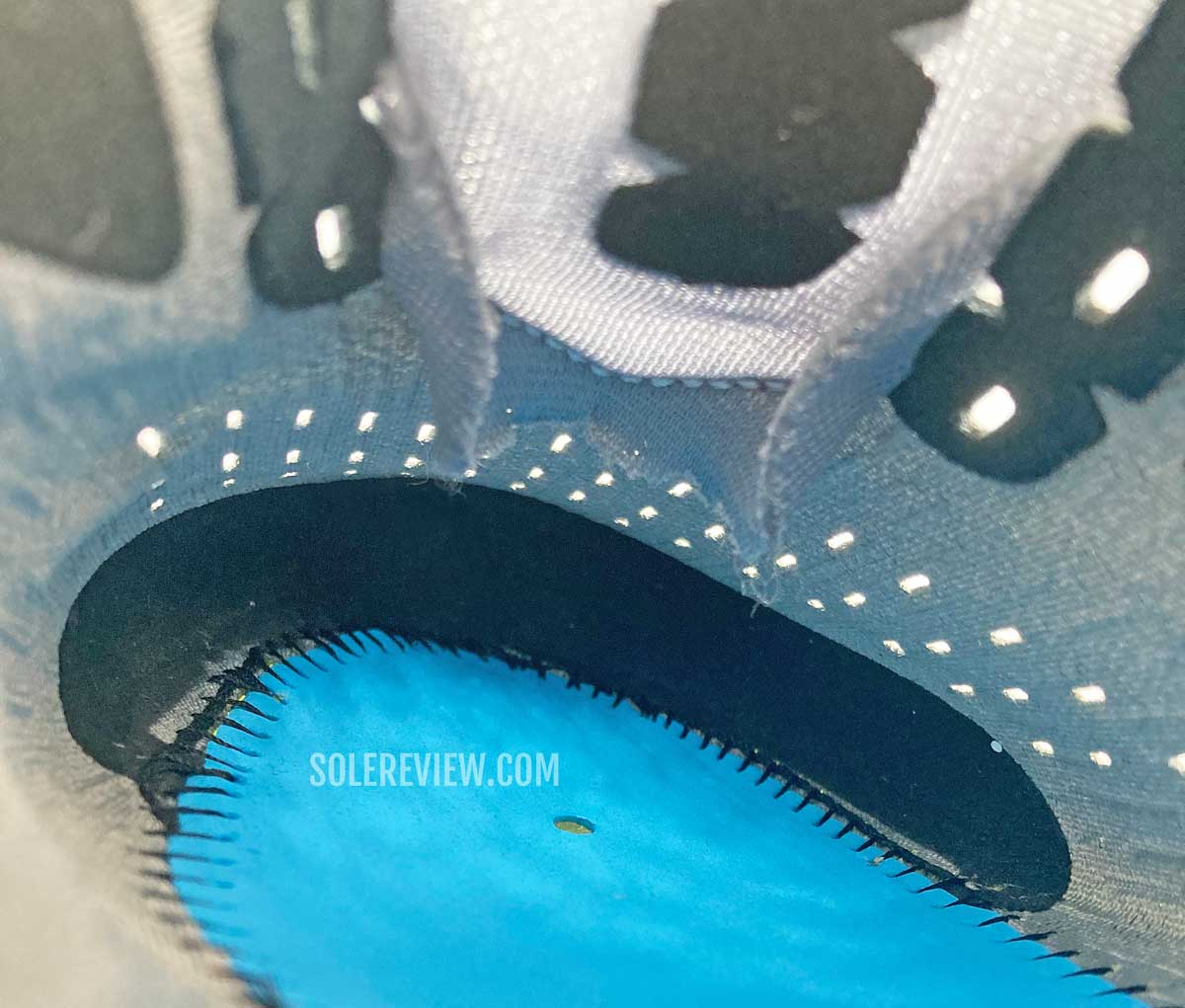
The insides of this tempo shoe are surprisingly accommodating.
It also has the cushioning comfort to go the distance – and that means that ‘softness’ and ‘cushioning’ don’t have to be the same.
The secure upper is very breathable and accommodating, whereas the single-piece exterior keeps the insides free of bumpy seams.
8) Best for short races: adidas adios 7
There exists a spot between lightweight trainers and racing flats, and that’s where the adidas adios 7 thrives.
The adios 7 is much firmer and grips better than a shoe like the Nike ZoomX Streakfly or the Saucony Kinvara. At the same time, its Lightstrike foam midsole provides more cushioning than a racing flat.
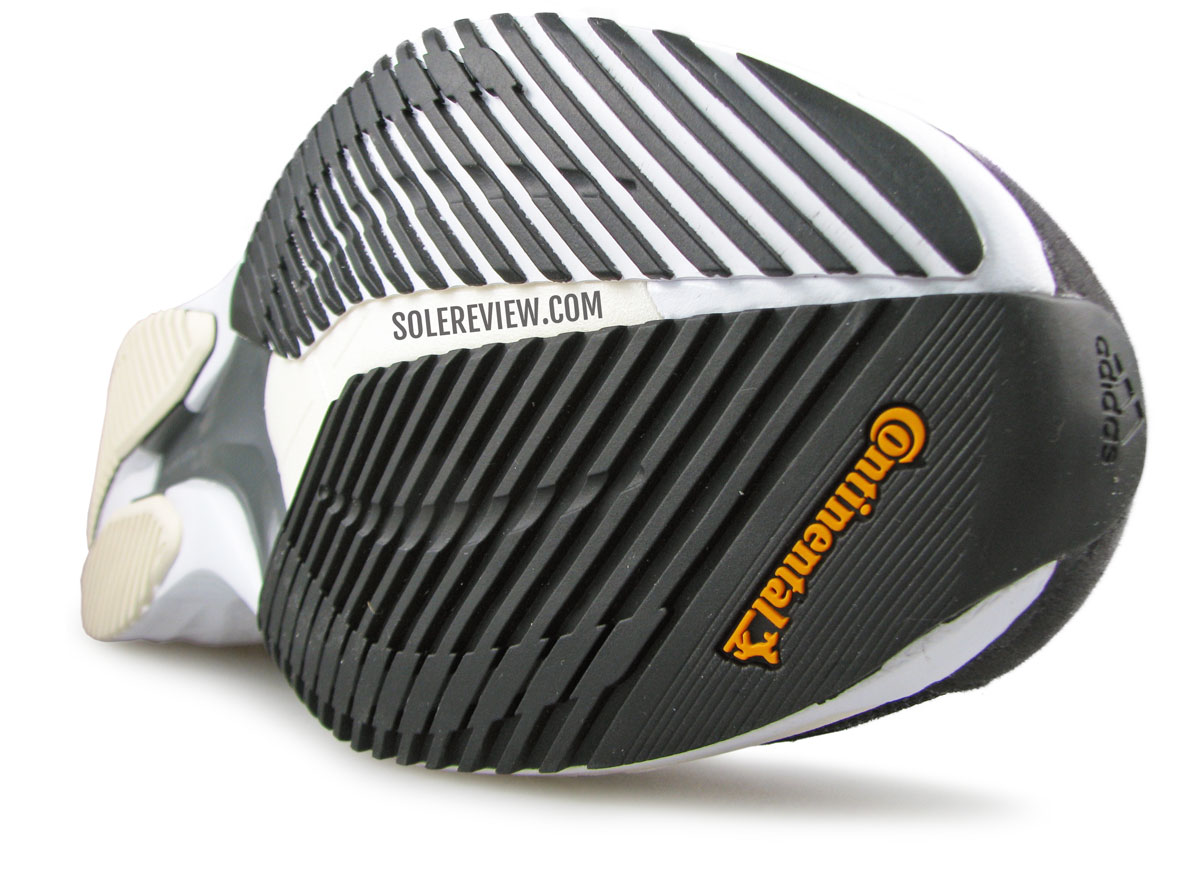
The adios 7’s outsole grip is phenomenal.
For the better part of two years, the adios 6 has been our go-to shoe in this category. The adidas adios 7 isn’t very different from the adios 6, as both the versions share the same midsole and outsole. Our review of the adios is here.
Race in them if you will, or use them to help inject more speed into your training runs. It is excellent for treadmill runs as well.
The adios uses a traditional upper that uses an ultra-breathable mesh and soft synthetic overlays. The result is a very snug upper that also breathes extremely well.
9) Best for trail runs: Brooks Cascadia 16
The term ‘trail’ can mean many things. It could be a technical terrain with loose rocks, pointy roots, a steep gradient, slushy surfaces, and slippery rocks. Or it can be a flat trail with a gravel or wood-chip surface.
So we had to pick just one trail shoe for everything, it would have to be the Brooks Cascadia 16 – preferably in a waterproof Gore-Tex version. A GTX membrane greatly enhances the shoe’s all-weather capabilities.
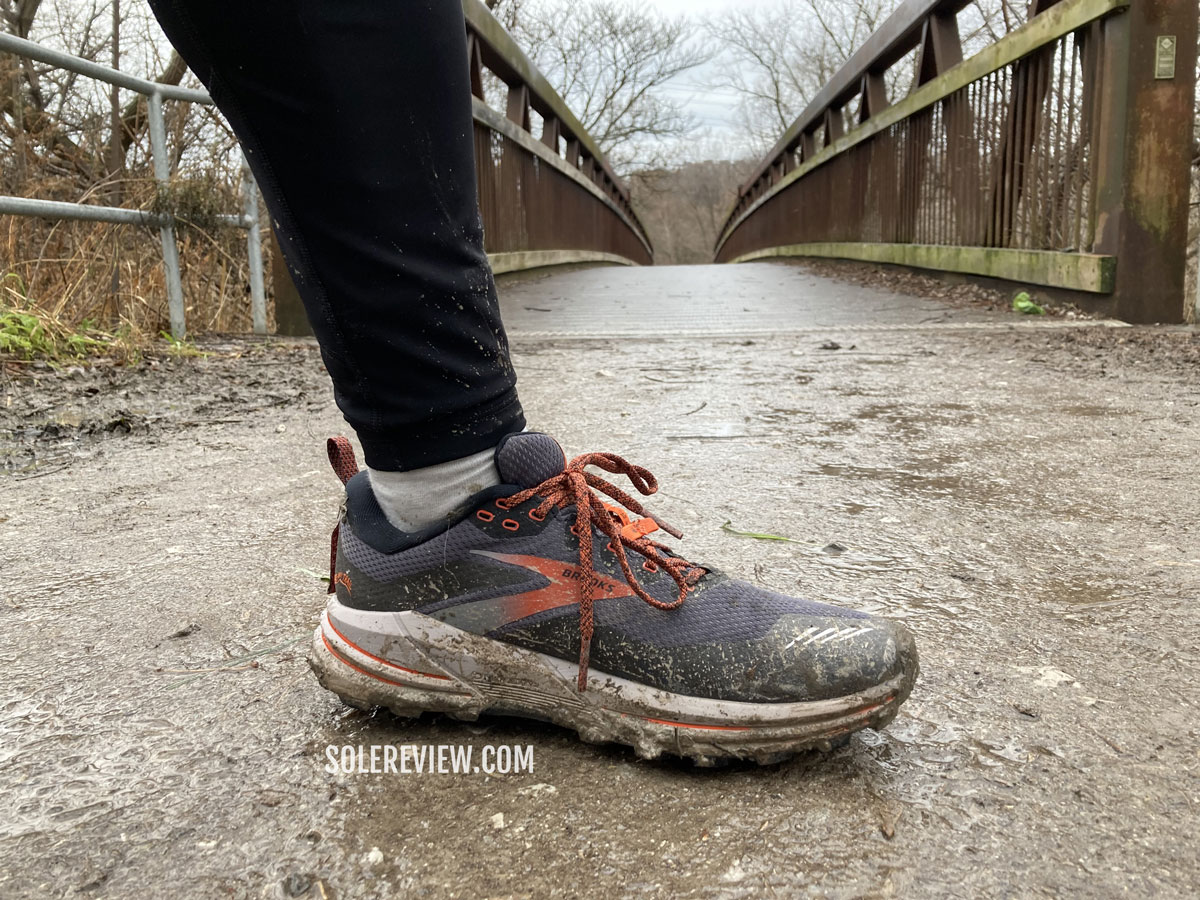
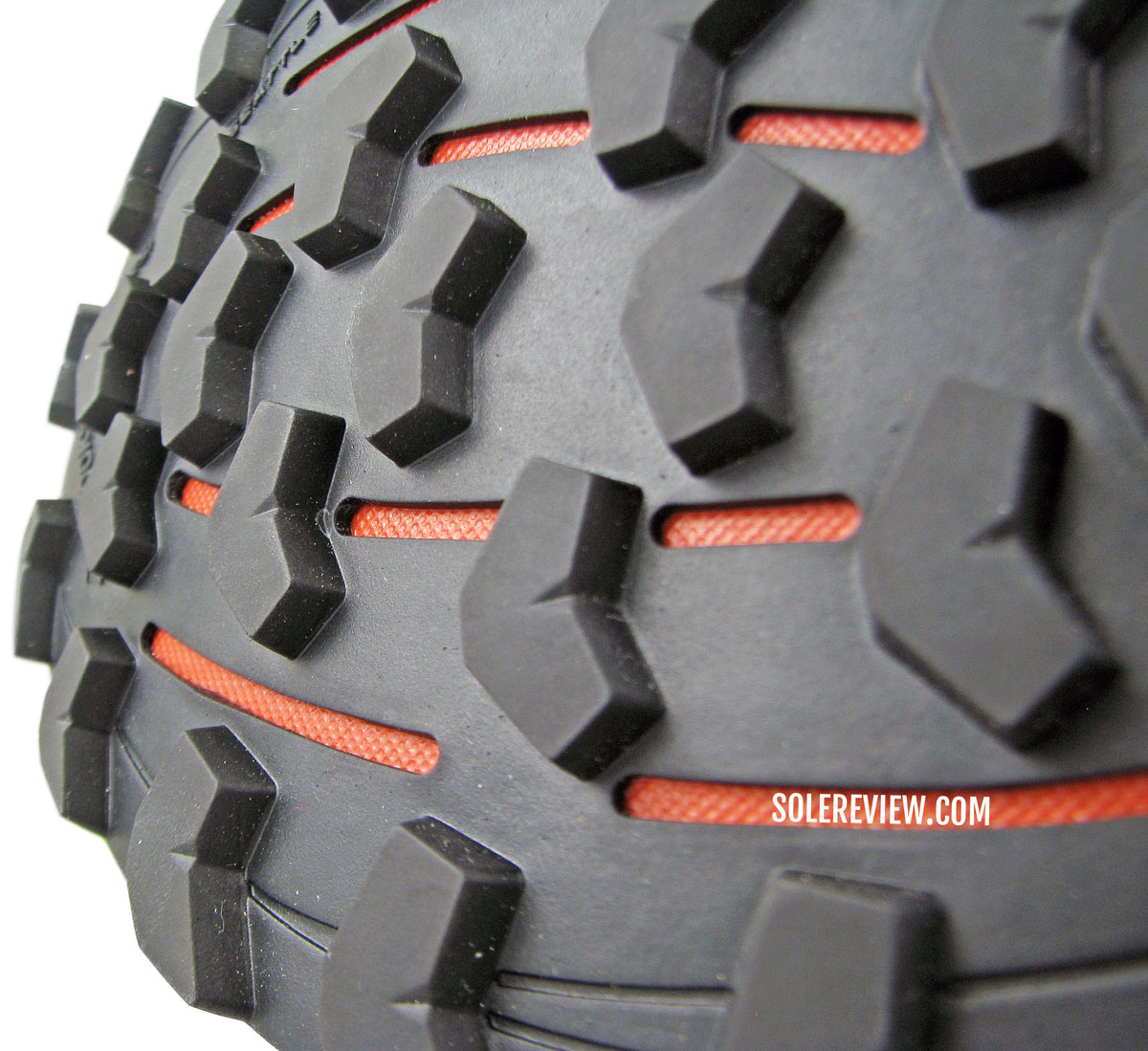
The outsole grooves run length-wise; the orange-colored Ballistic rock shield is flexible.
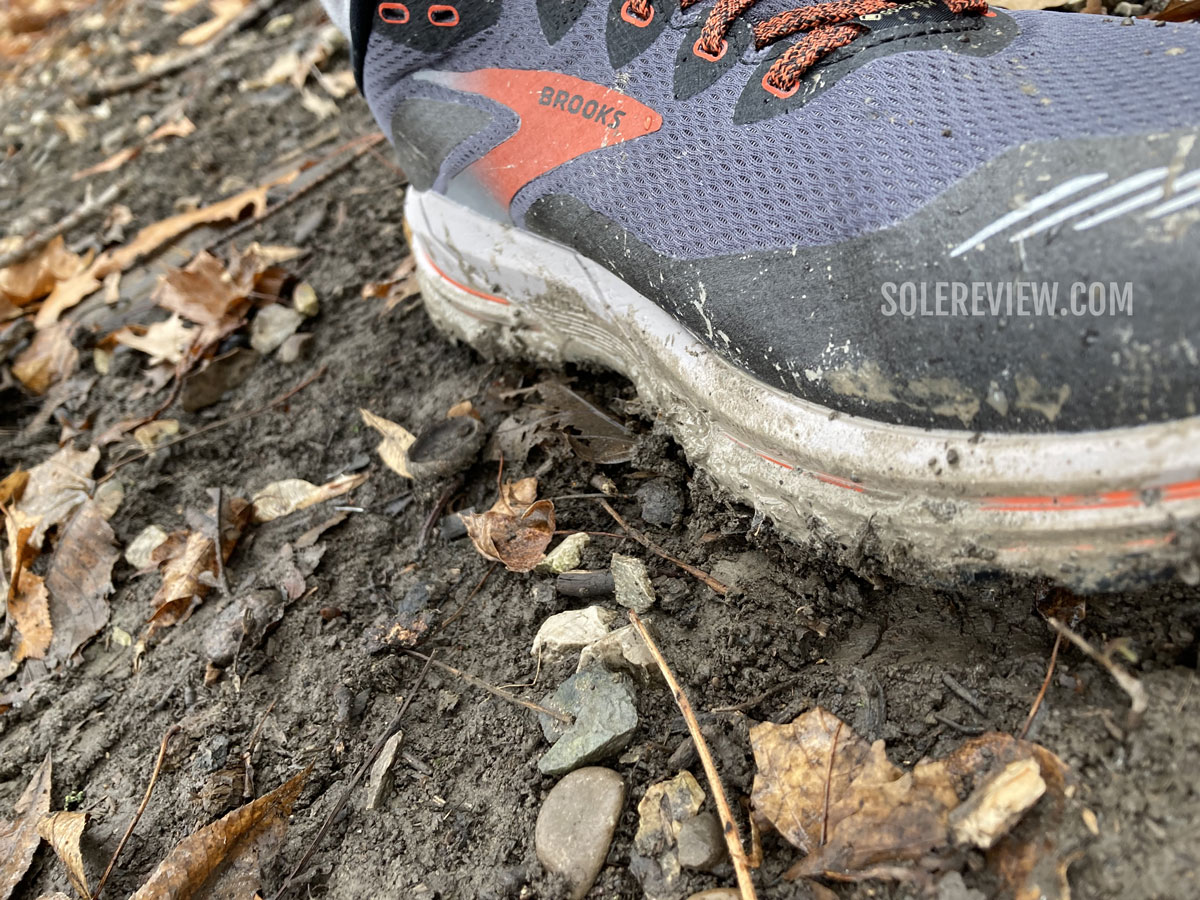
The Cascadia 16 is a multi-use trail running shoe that works on a variety of surfaces.
Because when you take a close look at the Cascadia 16, you’ll realize that it has everything that an all-purpose trail running shoe needs.
The outsole uses sticky rubber for traction, there’s a flexible rock shield for protection, and ample cushioning to go the distance. The wide midsole footprint also makes the Cascadia supportive. Our comprehensive review is a relevant read.
Except for the absence of a gaiter D-ring, the upper is trail-worthy. The thick ‘bumpers’ on the sides act as protective reinforcement, and there’s plenty of room should you choose to wear a pair of thick hiking socks.
10) Best under $100: adidas Duramo 10
The adidas Duramo 10 is surprisingly well-kitted for a $70 shoe. By that, we mean that the Duramo gets its running shoe basics right.
An EVA foam midsole delivers a firm and supportive cushioning for everyday runs, and a full rubber outsole offers durable traction.
The upper doesn’t look downmarket; fused overlays and faux heel padding add functional and cosmetic details. The lacing uses a variable spacing layout for a better fit adjustment, and the padded tongue and heel add comfort.
11) Best running shoe for snow and ice: Salomon Snowspike CSWP
If no running shoe has worked on the snow and ice so far, you need to bring out the cavalry. Or to be more specific, the Salomon Snowspike CSWP Waterproof.
We reviewed this winter running shoe in great detail, but here’s the low-down.
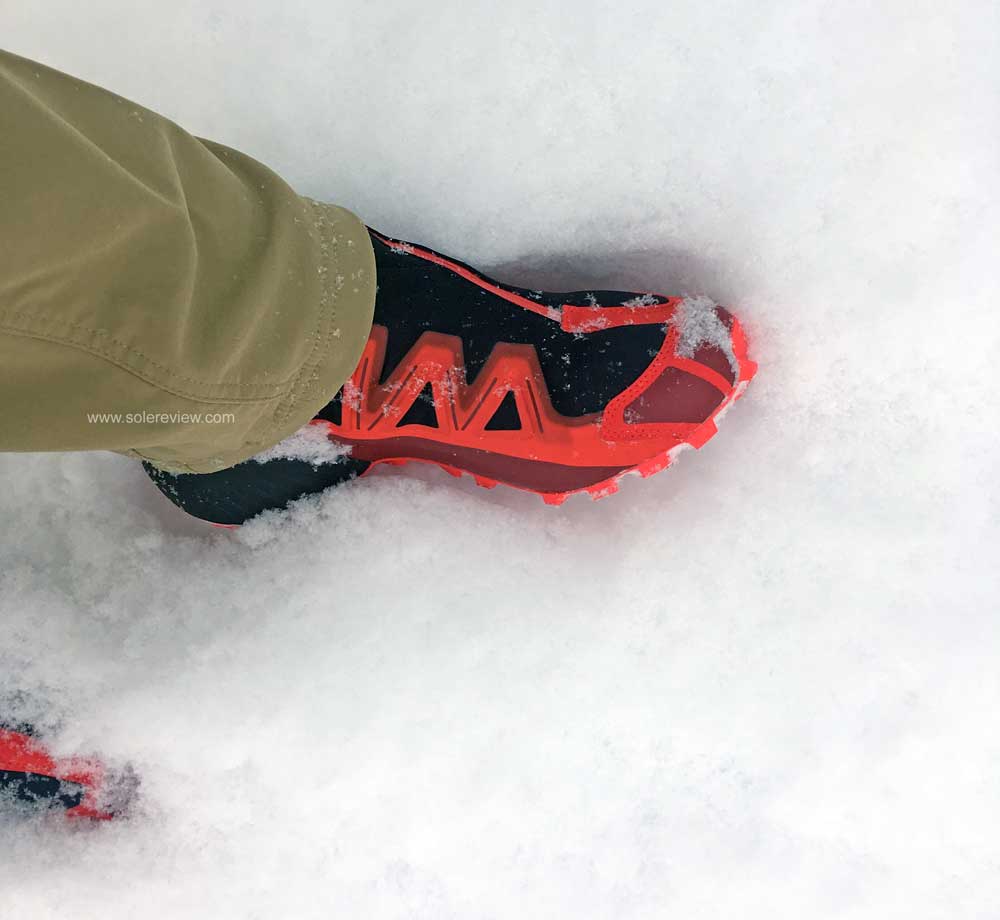
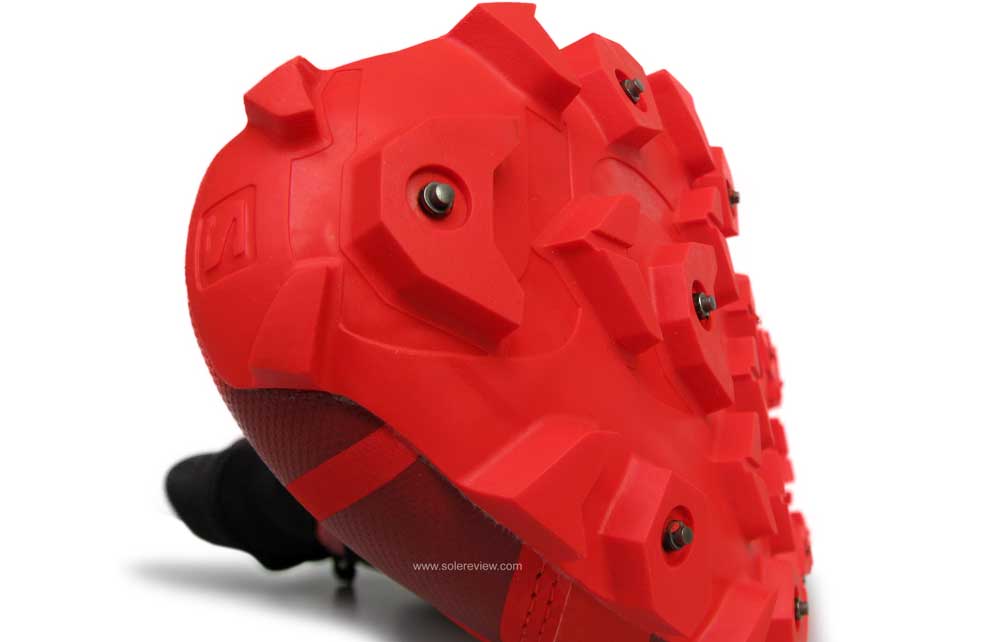
If the idea of cold-weather running on slippery, icy surfaces gives you the chills, then the Salomon Snowspike CSWP is almost foolproof – and might we add, waterproof. Its spiked outsole bites hard into frozen surfaces for the ultimate in traction, while the foam midsole and multi-density insole provide the necessary cushioning comfort.
Zipping the above-the-ankle gaiter keeps the water, snow, and slush out. Inside the gaiter, there’s a proper ‘shoe’ with a speed (bungee) lacing that cinches easily and keeps the foot secured.
It is expensive, but it’s an acceptable price to pay for safe winter runs.
Do you own any of these shoes? Improve this review by sharing your insights – submit a review here.

